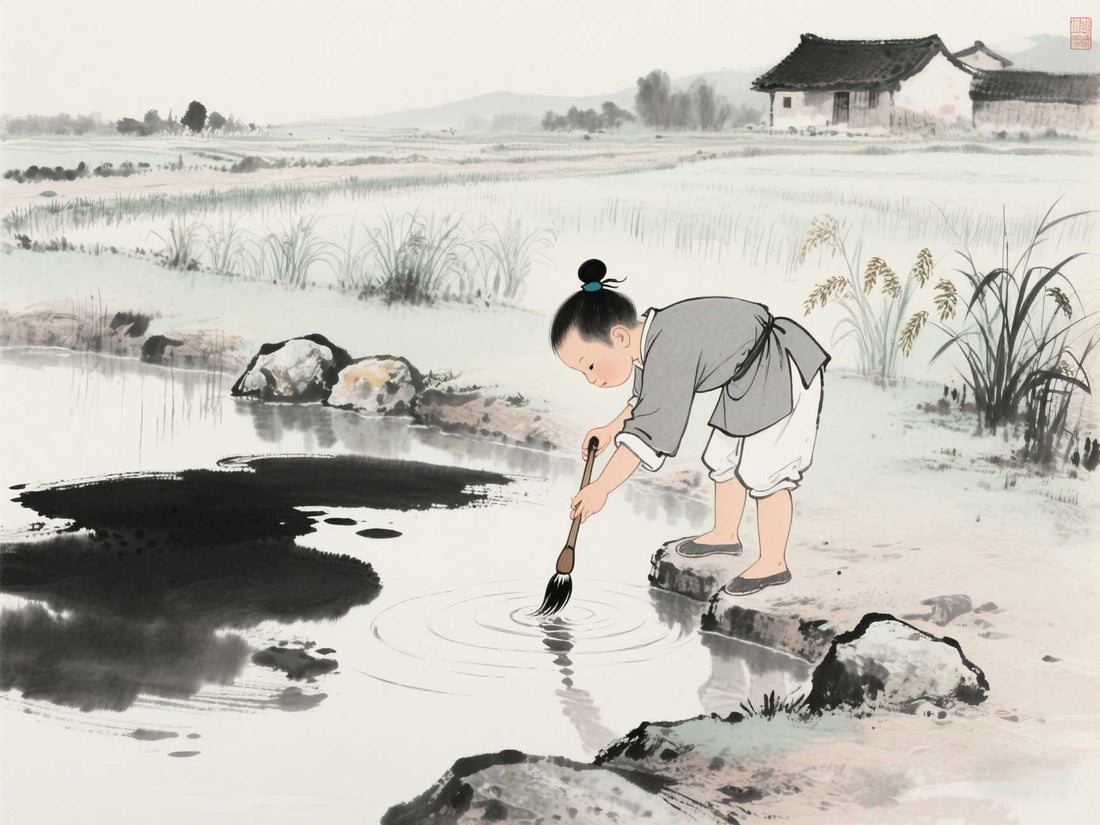
Zhang Zhi, "Pond Water Filled with Ink"
Share
Origin of the story and core narrative
Zhang Zhi (Zi Boying), a calligrapher of the Eastern Han Dynasty, is famous for the story of "learning calligraphy by the pool, until the water in the pool turned into ink". According to Wei Heng's "Four Styles of Calligraphy", his calligraphy method has a great visual impact:
- How to practice calligraphy : He practiced calligraphy by the pool at home every day, first writing on a piece of silk, then immersing the written cloth in the pool to rinse it. Over the years, the water in the pool turned completely black.
-
Tool innovation : In the early days, silk was used as paper and water was used instead of ink. By observing the changes in brushstrokes through repeated immersion, a unique brushwork perception system was formed.
This move is regarded as the ultimate embodiment of the ancient craftsman spirit, and together with Wang Xizhi's "Ink Pond" and Zhiyong's "Pen Mound", they constitute the "Three Symbols of Asceticism" in the history of calligraphy.
Multi-dimensional interpretation of the spiritual core
-
At the level of pursuit of skills <br>Zhang Zhi broke through the tradition of "independent characters" in Han Dynasty Zhangcao calligraphy, and refined the "one-stroke writing" technique in the process of dyeing ink with pond water, which elevated cursive calligraphy from practical writing to a coherent and fluent artistic expression. His creative concept of "the character is created with one stroke, with continuous blood flow" shows the ultimate exploration of the rhythm of lines and the charm of space.
-
Cultural symbolism
- Literati’s character : Zhang Zhi was born into a military family but was indifferent to officialdom. He used “Linchi” as a metaphor for the pursuit of spiritual freedom by scholars and rejected the stereotyped constraints of “Cui Du Zhangcao”;
- Silk Road Aesthetics : The open atmosphere of the Dunhuang region is integrated into his calligraphy style. The characters in "Champion's Letter" are like the image of "lonely smoke in the desert", reflecting the artistic breakthrough under the fusion of Silk Road civilizations.
Historical influence and evaluation evolution
- The Tang Dynasty praised Zhang Zhi: Zhang Huaiguan listed him as a "master of cursive script" in his "Book Judgment", saying that he was "free and unrestrained, without any regrets", thus establishing his status as the "Cursive Saint";
- Reflections in the Song and Ming Dynasties : Zhao Yi criticized his contemporaries for blindly imitating Zhang Zhi's "crazy habits" in his "Against Cursive Script", but this controversy actually highlighted his promotion of the independence of calligraphy art;
- Modern inspiration : Contemporary scholars interpret "Pool of Ink" as a classic example of "immersive creation", emphasizing the scarcity of concentration in the digital age
- Geographical research : There are two different opinions about the exact location of Zhang Zhi's "ink-dyeing pool": Dunhuang and Shanzhou. The difference in historical records may be due to the migration experience of his family.
- Quantitative doubt : Some researchers have calculated that it would take hundreds of thousands of rinses to "use up all the ink in the pool", and believe that this statement is more of a literary exaggeration of the spirit of diligence.
This story goes beyond a simple inspirational story and has become a landmark event in the transformation of Chinese calligraphy from "skill" to "Tao". Its core lies in breaking through technical bottlenecks through repeated practice and ultimately achieving philosophical transcendence of the art itself.
